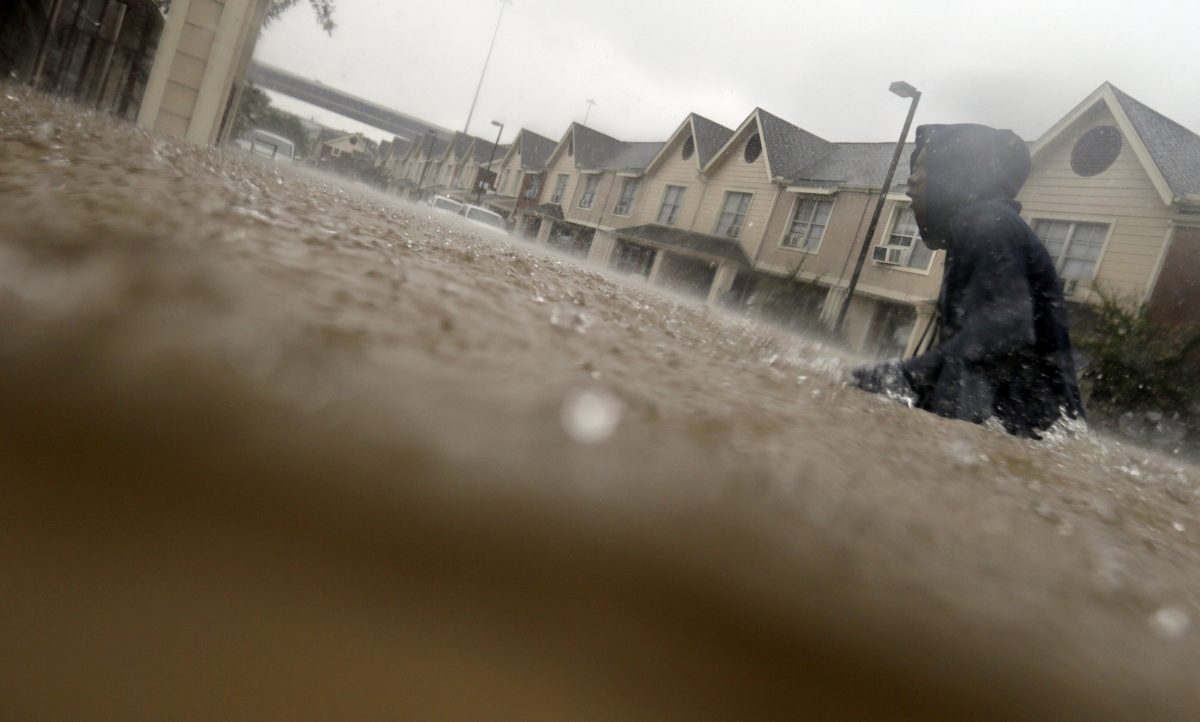Scrolling through the horrifying images of the flooding in Houston this week, I was reminded of something I’d read about the federal government’s National Flood Insurance Program (NFIP) in the wake of some storm past — perhaps Hurricane Sandy or even Katrina. I decided to do a little digging on the subject, and the result was today’s column at The Week, which examines how NFIP, a division of FEMA, contributed to the tragedy of Hurricane Harvey. An excerpt:
Videos by Rare
The NFIP offers flood insurance at steep discounts for homes and other buildings, including businesses, constructed in flood-prone areas. (Such insurance is a federal mandate to secure a mortgage in these zones.) Where a normal insurance company would jack up the premium price to cover the high risk of floodplain construction, thus discouraging vulnerable building plans among those who cannot afford to cover the cost of disaster, the NFIP will insure this construction at a discount.
This incentivizes risky construction and downplays the nature of the risk. After all, catastrophic insurance is essentially a wager in which the company bets disaster won’t strike and the customer bets it will. Riskier wagers come at a higher price, so an artificially low premium like the NFIP offers cruelly deludes homeowners into believing their flood-prone houses are far safer than they are. […]
Making matters worse is how the NFIP determines which areas to insure. The program is based on FEMA maps of flooding patterns — maps that are often outdated and don’t reflect drainage changes caused by recent construction or other environmental evolutions. As the New Orleans-based Coalition for Sustainable Flood Insurance once put it, this means Americans who “built where the government told them” later find out Washington gives bad, potentially life-ruining advice.
RELATED: All the information you need to help Texans as flooding reaches “catastrophic” levels
So there are two sides of this. The first is the homes the NFIP does insure, which account for about 15 percent of Houston’s Harris County, no small number on Houston’s scale. These are houses constructed in zones that FEMA maps say are flood-prone. The federal government requires homeowners to have flood insurance to close on a house there, and that insurance is typically provided by the NFIP because there is not much private flood insurance available. Flooding is so damaging that market-priced flood insurance, especially in these zones, would be very expensive, and the NFIP offers such unrealistically low prices there’s no way for private insurers to compete.
So the existence of the NFIP encourages construction in these areas even though they are not really suited for permanent structures because of the flood risk. It also suggests to homeowners that the risk maybe isn’t really that bad — after all, if your house can be adequately insured against flooding for a couple hundred bucks a year (and you get up to a $520,000 payout, per house, per flood at that price), how risky can it really be? As many residents of the Texas gulf coast are tragically finding out, the answer is “very.”
The second side of this is the homes the NFIP doesn’t insure but which are still in flood-prone areas. The trouble is, the NFIP offers insurance in areas that are selected based on often outdated FEMA maps. As the last paragraph in the quote above notes, those maps frequently don’t account, for example, for how new construction nearby could change drainage patterns, suddenly making an area that wasn’t a flood risk before quite dangerous. (This is speculation, but my guess is FEMA can’t possibly keep its maps up-to-date because of the sheer size of this country. That’s an inherent risk in doing this on a federal instead of local level.)
RELATED: “It’s not something I need to be thanked for” — Iraq veteran explains viral rescue photo
So if your home isn’t in the NFIP zone, the assumption is it isn’t at significant flood risk — an assumption that may well be false. Only 15 percent of Houston is NFIP insured, but that other 85 percent is not dry right now. And yes, this storm is historic, but Houston has been hit by three “once in 500 years” floods in the last decade. The FEMA maps that have encouraged new development in recent decades in Houston are clearly wrong, and dangerously so.
Read the rest of my Week column here, and for on the bad maps and the nature of Houston’s flooding problems, see this must-read 2016 article from ProPublica and The Texas Tribune. Finally, for a guide to places you can donate to help Houston recover, click here. If you can afford it, recurring contributions are best, as this is going to be a long process.



